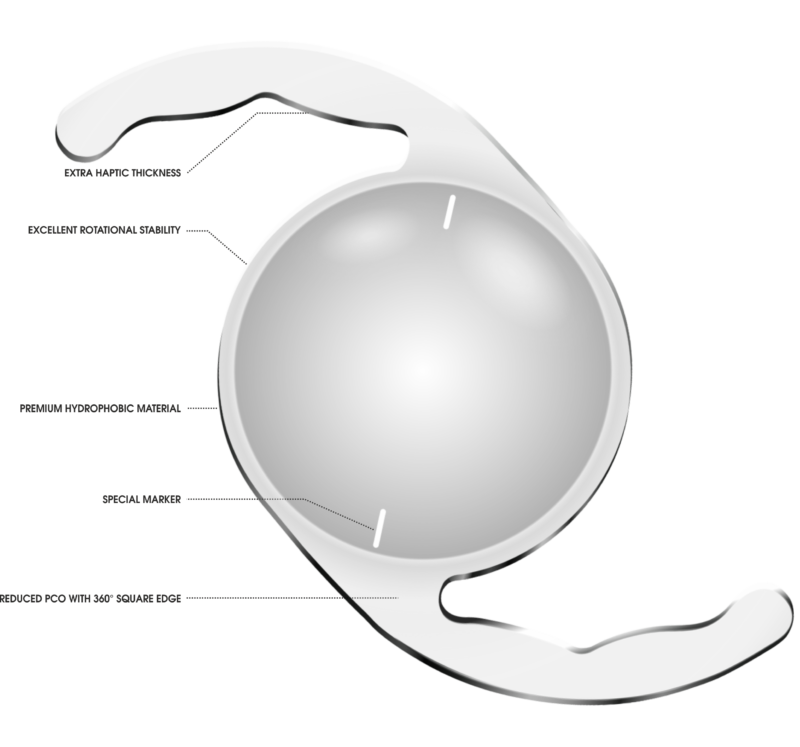IOL Categories

Aspheric IOL
Aspheric IOLs are monofocal lenses that correct for spherical aberration. The result is a lens that will provide better overall vision than traditional IOLs, especially at night. Patients who choose an aspheric IOL can expect: Improved contrast sensitivity. Enhanced functional vision.

Toric IOL
Correcting any astigmatism with a toric IOL is a safe and reliable way to improve your vision and reduce your need for glasses after surgery. Careful planning in clinic and precise lens positioning during surgery will ensure the best possible results.

Rigid IOL
In 1949, first intraocular lens (IOL) insertion after cataract surgery was performed by Sir Harold Ridley, in London. Only in the 1970s, the IOL insertion after cataract surgery began to be a standard procedure. The material the first IOL-s were composed of was polymethyl methacrylate (PMMA). The PMMA is a rigid material and the corneal incision had to be at least as big as the IOLs optic.

Multifocal IOL
Multifocal IOLs are a type of prosthetic lens used in cataract surgery. Some patients choose to have this lens placed before they have developed cataracts, a procedure known as a refractive lens exchange. During cataract or lens replacement surgery, the patient's natural lenses are replaced with multifocal IOLs.

Monofocal IOL
Monofocal intraocular lenses are indicated for the visual correction of aphakia after extracapsular cataract extraction. Such lenses have a single focus and are usually planned to correct the distance vision. Patients having such lenses need glasses for near.

Extended depth of focus IOL
Extended depth-of-focus (EDOF) is a new intraocular lens (IOL) technology in the treatment of presbyopia. In contrast to multifocal (MF) IOLs, EDOF lenses create a sin gle elongated focal point, rather than several foci, to enhance depth of focus.